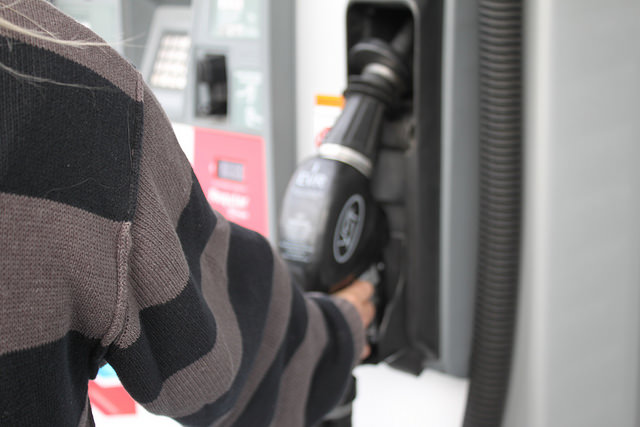A good idea: warning labels at gas pumps to curb global warming
What Motivates people toward Change
Labels on gas pumps could help spread awareness of CO2 emissions.
October 25, 2016
Predictions say there will be two billion drivers by year 2030. This trajectory not only scares me, but prompts me to wonder what can be done about climate change. Earlier this year, someone fueling up in Vancouver was the first customer to see a new label featuring a picture of an endangered species wrapped on the hose.
A similar law will be on the ballot in San Francisco in November, according to Jamie Brooks from Our Horizon, an activist group in Oakland. The sponsor of the ballot measure, San Francisco Supervisor John Avalos, is likely to push the bill through to the 9th Circuit Court if he hears that at least four hundred people express interest in supporting it.
What will the warning labels look like? The exact wording isn’t settled yet, but here’s the gist of it. The label could show a photo of a polar bear, deer or penguin and say, “use of this fuel leads to higher gas emissions for this state and global warming which could put 33% of our endangered animal species at risk for extinction.”
Scientists suggest that it will be necessary to cut average carbon emissions 80 percent if we wish to stabilize the impact of climate change.
“The U.S. Environmental Protection Agency has determined that a typical passenger vehicle burning one gallon of fuel produces on the average of twenty pounds of tailpipe carbon dioxide,” which the EPA has determined is the primary greenhouse gas contributing to climate change.
Putting labels on gasoline pumps isn’t going to fix climate change by itself any more than cigarette labels fixed smoking. But the latest studies on tobacco labels have shown that there are far fewer smokers in the 15-20 age group. When you scare people, you get their attention.
When gasoline labels arrive — and they will arrive — it’s important that they offer hope and a view towards the preservation of our planet in the long term, along with a dose of fear to stimulate conversations about driving and its effects on endangered species.








































































